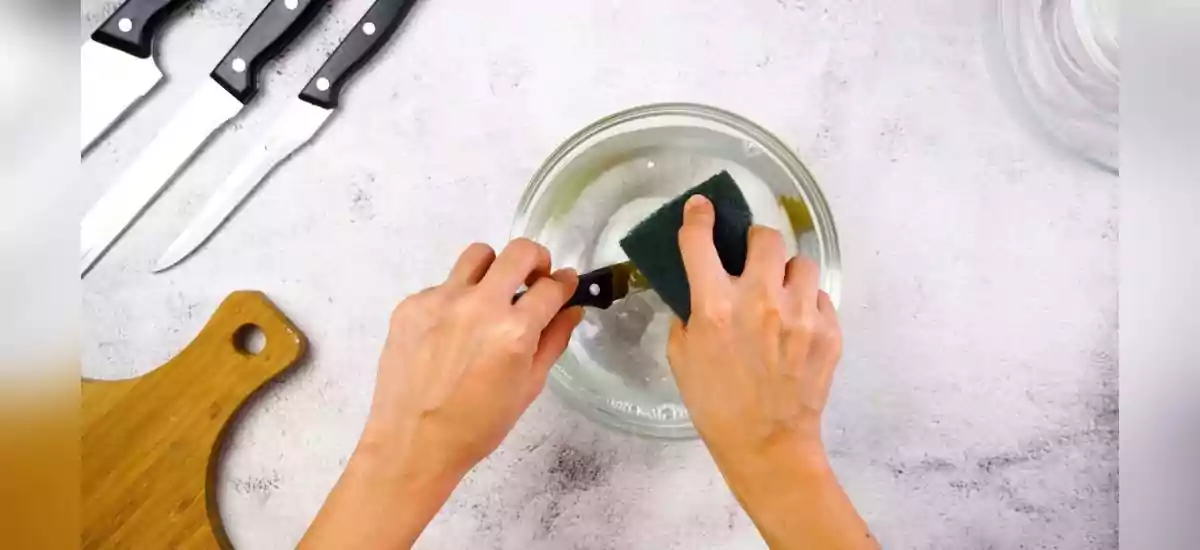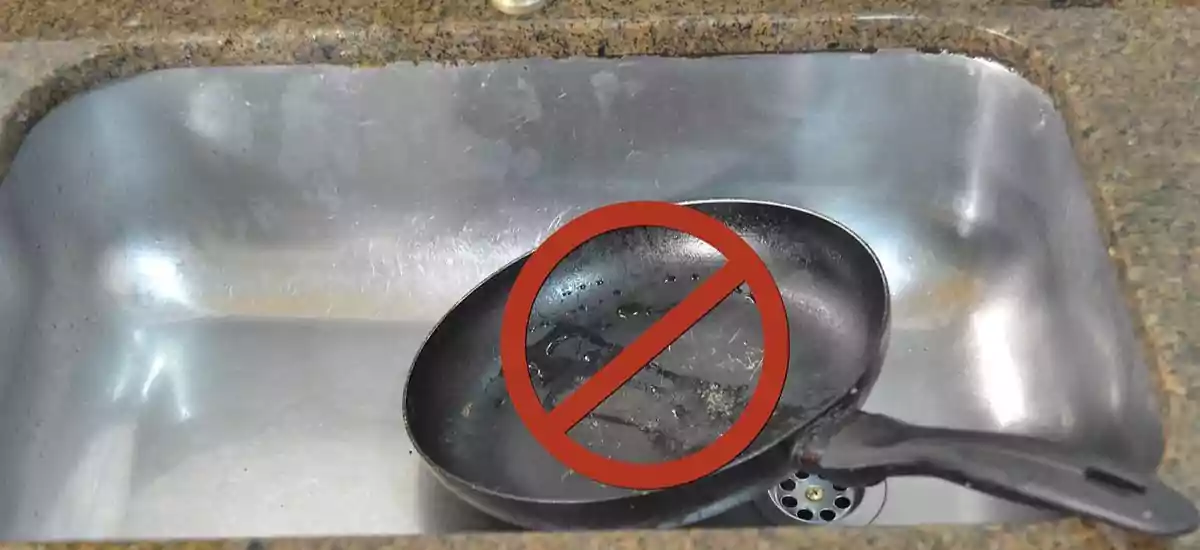How To Remove Rust From Stainless Steel In Easy Steps?
Don’t let rust take over your gleaming stainless steel kitchen. Use Baking Soda or Oxalic Acid to remove the unsightly tarnish, and your surfaces and appliances will soon shine again.
A kitchen outfitted with gleaming stainless steel equipment and worktops is the epitome of a clean, professional environment. When a strong, supposedly unbreakable metal that makes up your kitchen sink, worktops, and pots and pans rust, the pricey aesthetic appears worse than if it were broken.
Homeowners coping with these flaws may wonder, “Isn’t stainless steel meant to be, well, stainless?” Though the moniker may be deceiving, any device constructed of chromium-based metal may rapidly corrode if not properly cared for. Fortunately, the flaws can be readily removed.
Continue reading to learn how to remove rust from stainless steel in the kitchen and around the home.
Top Methods To Remove Rust From Stainless Steel At Your Home
If you’ve left utensils or frying pans in the kitchen sink for longer than you’d want to admit, don’t give up on eliminating unattractive rust just yet. You will be surprised to see the solutions lying there in front of you if you’re in the kitchen.
- Baking Soda
- Cleaners containing oxalic acid
How To Remove Rust From Stainless Steel Using Baking Soda?

Supplies:
- Baking soda
- A piece of cloth
- A brush with soft bristles
- Towels that you can throw away and preferably a little rough like paper ones
Step 1: Make A Paste Of Baking Soda.
Make a paste of 1 tablespoon baking soda and 2 cups water to remove a few ugly spots off the edge of a pan or the front of your dishwasher. (Skip on to the following steps if you have bigger rust patches.)
Baking soda is mildly abrasive. It means that you’re fighting corrosion in a chemical-free method that will wipe the rust off stainless steel without harming it.
Step 2: Rub The Baking Soda Paste Onto The stainless Steel Surface.
Now using a soft, clean cloth apply and rub the paste onto the affected surface area. Follow the direction of the grain.
Step 3: Wash & clean with a cloth.
Now, use a moist paper towel to clean the problem area gently.
Guide to Make Extra Long Curtain Rods for your
How To Remove Rust From Stainless Steel Using A Cleaner Containing Oxalic Acid?
If you’ve ever left damp cast-iron pans in the sink, you’ve probably awoken to the terrifying sight of rust marring a once-perfectly varnished stainless steel sink. This is a forgivable blunder. But how do you handle it?
You may want to supplement your cleaning arsenal by using an oxalic acid-containing cleaner, such as Bar Keepers Friend, or a powdered version of oxalic acid that can be combined with water.
True, not all stainless steel reacts in the same manner. When a baking soda bath does not enough, oxalic acid-based cleansers provide a highly efficient alternate option for removing rust and cleaning stains.
Supplies
- A cleaner that contains oxalic acid.
- A sponge
Step 1: Buy a cleaner containing oxalic acid, then apply it to the rusted surface.
Follow the package’s directions and apply a liberal amount of oxalic acid cleanser to the afflicted region.
General Electric suggests Bar Keepers Friend Soft Cleaner (a grit-free liquid cleanser), which you may also find at your local home improvement store.
Another highly efficient cleaner that you may get at your nearby local hardware store is Kleen King Stainless Steel and Copper Cleaner.
Caustic cleaners containing chlorides should be avoided since their abrasive character only aggravates the steel’s chromium coating (the protective layer).
Step 2: Rub The Solution On The Rust.
Once the cleaner has dried, massage it toward the metal grain lines with a soft, slightly moist sponge. Again, a little elbow grease is required, but it is well worth it for the gleaming finish that awaits you.
Step 3: Wash & Let It Dry
Finally, rinse well with clean water and gently towel dry. If the stain remains, rinse with warm water and repeat the process. Don’t keep the cleaner on for more than a minute; instead, use extra elbow grease to cut through the residual discoloration.
How To Get Rust Off A Stainless Steel Sink Or Any Large Area?
Even though the surface area is large, the process doesn’t get any complicated. However, due to the larger area, it may a take a little more time to clean the rust. Just follow the steps below and see the corrosion vanishing:
Step 1: Coat & rinse with a baking soda solution or paste.
To eliminate dirt and dampen the surface, thoroughly rinse the bigger surface area—whether it’s the basin of your sink or a portion of your stainless steel worktops. Immediately after that, apply a coating of baking soda to the surface, being careful to cover the whole rusted area.
Step 2: Wait For The Paste To Dry.
Allow the baking soda coating to settle for 30 minutes to an hour.
Step 3: Scrub
Roll up your sleeves and get to cleaning! Scrub using a soft bristle brush or, if you’re out of cleaning brushes, use an old toothbrush that you may have preserved for this purpose.
Step 4: Wash & Let The Surface Dry.
Using a paper towel, rinse and dry the sink or the stainless steel surface you are cleaning.
The Best (and Worst) Practices For Removing Rust From Stainless Steel

Scrubbing is required to remove rust from metal. Avoid using steel wool, steel brushes, or any cleaner that includes fluorine, chlorine, bromine, or iodine to remove rust from stainless steel (to name but a few elements in the chloride family). Remember that chlorides are abrasive and will ruin the “stainless” surface, rendering it prone to corrosion.
Furthermore, rust removers designed for other metals, as well as abrasive cleaners and scouring pads such as steel wool, can produce severe scratches—or, worse, leave a troublesome residue of particles that can lead to yet another unpleasant rust encounter.
Keep any stainless steel item away from moisture if you want to avoid rusting in future. Refrigerators are especially vulnerable if you live near the coast with salty air or share the kitchen with a lot of little, eager fingers that pour liquids into the nooks and crevices of your fridge!
If you see a splash or spill, don’t put it off for later. Quickly take a mop, a paper towel, or a cloth and get to work. Your kitchen’s sparkling stainless steel accents will thank you later.
To preserve that gleaming brilliance throughout your kitchen, gently wipe away smudges and fingerprints using warm water combined with a light soap or dish detergent. Then, using a wet towel, give these stainless steel surfaces a brisk washing, and don’t skimp on the drying.
You may reduce moisture by removing remaining water or residual droplets with another clean towel before it starts the same cycle all over again.
You Should Also Know How To Repair Glasses With A Metal Bridge
FAQs
1. What Takes Rust Off Of Stainless Steel?
While you may use commercial rust remover available at the local hardware stores, a baking soda paste works fine too.
2. Does Vinegar Remove Rust From Stainless Steel?
You may use vinegar to eliminate minor rust spots on some stainless steel finishes, which is a good alternative. To resist fingerprints, some stainless steel includes an oleophobic or oil-repellant coating. This finish should not use vinegar with stainless steel since it can take away the layer.
For further impact, use vinegar and baking soda. Remember that even on stainless surfaces, you won’t be able to remove all of the rust with vinegar.
3. Does Rust Come Off Stainless Steel?
Yes, it does. You can use different solutions, such as a paste made from baking soda, water, or any acidic household product.
4. What Is The Best Homemade Rust Remover?
Baking soda is the best homemade rust remover because of its easy availability in every home.
More Suggestions For You Remove Rhinestones From Fabric in simple steps
